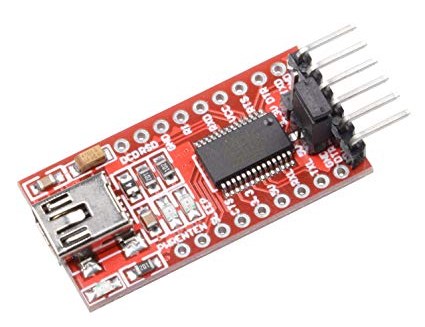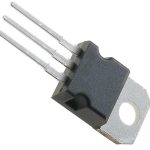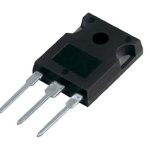The FT232RL chip is a widely used USB-to-UART bridge controller that plays a crucial role in the world of electronics. In this comprehensive guide, we will delve into the various aspects of mastering the FT232RL chip, from its datasheet and pinout to driver installation and reel packaging.
Understanding FT232RL
The FT232RL is a highly versatile USB-to-UART interface integrated circuit (IC) developed by FTDI (Future Technology Devices International). It serves as a bridge between USB and various serial protocols, allowing seamless communication between a host device and peripheral devices. The FT232RL has gained popularity across multiple industries due to its reliability, flexibility, and ease of use.
FT232RL Datasheet & Pinout

The FT232RL datasheet provides a comprehensive guide to the chip’s pinout and functionality. By studying the pinout diagram, one can gain insights into the various connections and their purposes. The datasheet also explains the chip’s programming modes, baud rates, flow control signals, and other key parameters, enabling users to configure the FT232RL according to their specific requirements.
Additionally, the datasheet presents the key specifications and electrical characteristics of the FT232RL. These include voltage levels, current requirements, and signal thresholds, among others. Understanding these specifications is crucial for ensuring proper integration and compatibility with other components in a system.
Furthermore, the datasheet outlines the programming and configuration options available for the FT232RL. This information guides users in customizing the chip’s behavior, such as setting different baud rates, enabling flow control, or modifying other parameters to suit their application needs.
FT232RL vs. FT232RNL
When comparing the FT232RL and FT232RNL, several factors come into play.
Firstly, the pinout configuration differs between the two chips, which may influence compatibility with existing designs or PCB layouts. Additionally, the data transfer speed varies, with the FT232RNL offering higher rates in certain scenarios.
Power consumption is another differentiating factor. Depending on the application’s power budget and energy efficiency requirements, one chip may be more suitable than the other. Factors such as operating voltage, standby current, and sleep mode capabilities need to be considered when selecting between the FT232RL and FT232RNL.
Advantages and disadvantages of each chip
Each chip has its own set of advantages and disadvantages in different applications. The FT232RL’s higher data transfer speed and broader pinout options make it ideal for projects that demand faster communication and more extensive connectivity. On the other hand, the FT232RNL’s lower power consumption can be advantageous in battery-powered or low-power devices.
Installing FT232RL Driver
To utilize the FT232RL effectively, it is necessary to install the appropriate driver for seamless communication between the chip and the host device. The driver installation process can vary depending on the operating system being used. Here is a step-by-step guide to installing the FT232RL driver:
- Download the FT232RL driver package from the manufacturer’s website or other reliable sources.
- Extract the downloaded package to a designated location on your computer.
- Connect the FT232RL device to your computer using a USB cable.
- Open the Device Manager on your operating system. This can usually be accessed through the Control Panel or by right-clicking on the Start button and selecting Device Manager.
- Locate the FT232RL device in the Device Manager. It may appear under the “Ports (COM & LPT)” or “Universal Serial Bus controllers” section.
- Right-click on the FT232RL device and select “Update Driver Software.”
- Choose the option to browse for the driver software manually.
- Navigate to the location where you extracted the FT232RL driver package and select the appropriate driver file for your operating system.
- Follow the on-screen instructions to complete the driver installation process.
- Once the installation is complete, the FT232RL device should be recognized by the operating system, and you can start using it in your applications.
Compatible operating systems and platforms
It is important to note that the compatibility of the FT232RL driver varies depending on the operating system and platform. The driver is typically available for popular operating systems such as Windows, macOS, and Linux. However, it is recommended to check the manufacturer’s documentation or website for the most up-to-date information on supported operating systems and versions.
The FT232RL chip is often packaged in reels, which provide several advantages in terms of storage, handling, and organization. The reel package consists of a continuous strip of chips wound around a reel, offering a convenient and efficient solution for mass production. This packaging method ensures that the chips remain protected during transportation and storage, reducing the risk of damage and increasing their shelf life.
FT232RL Reel and its Advantages

The FT232RL chip is frequently packaged in reels, which provide many advantages in terms of storage, handling, and organization. The reel package consists of a continuous strip of chips wound around a reel, offering a convenient and efficient solution for mass production. This packaging method ensures that the chips remain protected during transportation and storage, reducing the risk of damage and increasing their shelf life.
Benefits of Using a Reel Package
Using an FT232RL reel package offers numerous benefits for both manufacturers and end-users. Firstly, it simplifies the manufacturing process by allowing automated pick-and-place machines to handle the placement of the chips onto circuit boards. This significantly saves time and labor costs, ultimately leading to increased productivity.
Furthermore, the reel package provides excellent traceability, as each reel is marked with essential information such as the part number, lot code, and quantity. This makes it easier to track and manage inventory, ensuring accurate stock control and replenishment. Additionally, the reel package facilitates smooth integration into assembly lines, enabling seamless production processes with minimal interruptions.
Conclusion
Mastering the FT232RL chip opens up a world of possibilities for electronics enthusiasts and professionals alike. By understanding its datasheet, pinout, driver installation process, and reel packaging options, you can confidently integrate this versatile USB-to-UART bridge controller into your projects. The FT232RL chip’s widespread availability, compatibility, and extensive functionality make it a valuable tool for communication between microcontrollers, computers, and other devices.



